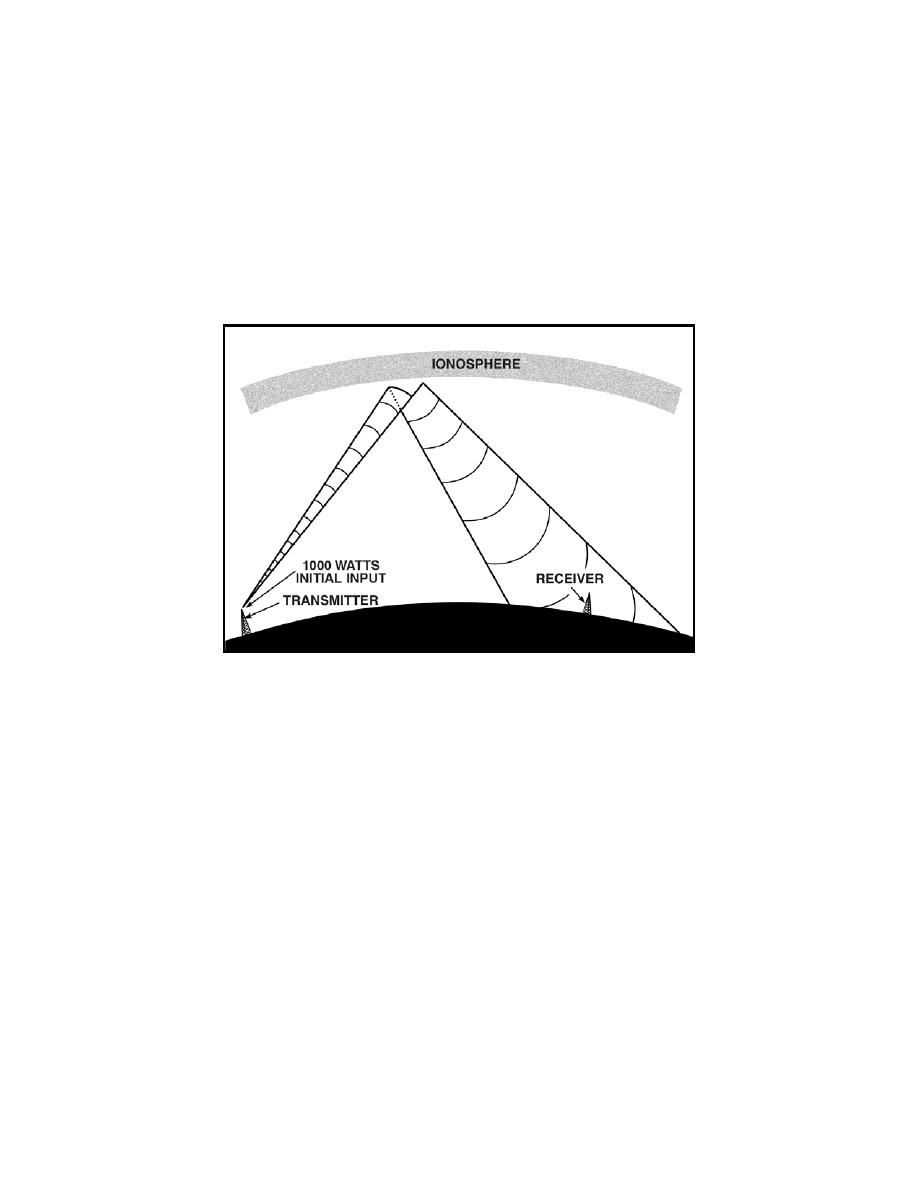
__________________________________________________________ Radio Wave Propagation
Freespace Loss
2-89. Normally, the major loss of energy is because of the spreading out of
the wavefront as it travels away from the transmitter. As the distance
increases, the area of the wavefront spreads out, much like the beam of a
flashlight. This means the amount of energy contained within any unit of
area on the wavefront decreases as distance increases. By the time the
energy arrives at the receiving antenna, the wavefront is so spread out that
the receiving antenna extends into only a very small fraction of the
wavefront, as illustrated in figure 2-22.
Figure 2-22. Freespace Loss Principle
2-90. The transmission losses just discussed are not the only factors that
interfere with communications. An additional factor that can interfere with
radio communications is the presence of electromagnetic interference (EMI).
This interference can result in annoying or impossible operating conditions.
Sources of EMI are both man-made and natural.
Man-Made Interference
2-91. Man-made interference may come from several sources. Some of these
sources, such as oscillators, communications transmitters, and radio
transmitters, may be specifically designed to generate radio frequency
energy. Some electrical devices also generate radio frequency energy,
although they are not specifically designed for this purpose. Examples are
ignition systems, generators, motors, switches, relays, and voltage regulators.
The intensity of man-made interference may vary throughout the day and
drop off to a low level at night when many of these sources are not being
used. Man-made interference may be a critical limiting factor at radio
receiving sites located near industrial areas.
2-29


 Previous Page
Previous Page
